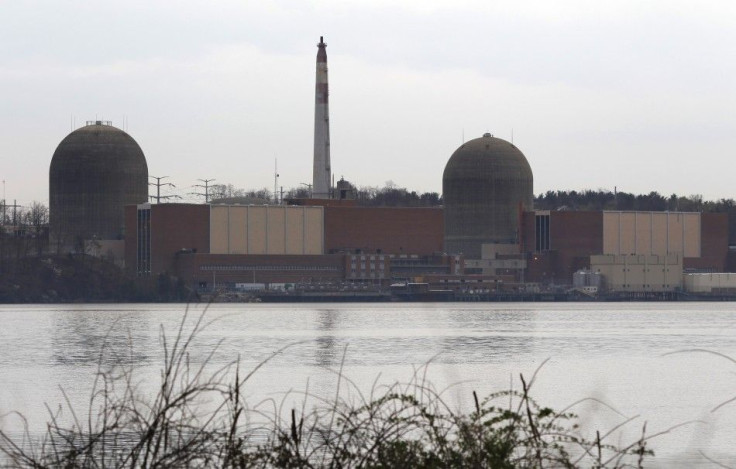NRC: Seismic Refits Not Yet Needed

The Nuclear regulatory Commission has no plans to retrofit existing nuclear power plants due to seismic hazards, despite an increase in measured seismic risk at some sites.
Joey Ledford, of the office of public affairs at the NRC, said nuclear reactors in the U.S. are all designed to take into account historical earthquakes, as well as some additional margin. How much that is depends on the plant and the individual permits.
An NRC study from 2008 looked at the seismic hazards facing nuclear power stations, focusing on those in the central and eastern U.S. There are 104 power stations in the United States, and 99 of them are in the regions in the study.
Ledford said the study was largely a screening tool, to see which plants, if any, require further evaluation. The idea was to see which plants might be at higher risks than government agencies thought and if any remedial action was needed. The 2008 study was an update to one done in the 1980s, as the data on earthquake hazards from the U.S. Geological survey has improved since then.
There are no plans for any immediate action, Ledford said, because the data doesn't warrant it. The study says that using the updated data, all of the nuclear plants have a 1 in 10,000 or less chance per year of damage to the reactor core from a seismic event. That doesn't mean the plants won't be studied at all - merely that there isn't any need for immediate retrofits.
According to the study, there are anywhere between two and three dozen power plants that should be looked at more closely. Some of that work involves getting better data for each individual site. Another will be checking the plants themselves, some of which have been modified since they were built.
An MSNBC.com story ranked the plants according to seismic risk, using data from the NRC. The NRC doesn't rank plants that way, and has distanced itself from the way MSNBC presented the data.
The earthquake that generated the tsunami which struck the Fukushima Daiichi reactor in Japan was magnitude 9.0. The tsunami disabled the cooling systems and leaving the reactors in danger of melting down. But such earthquakes are much less likely in the eastern half of the U.S., though the harder rock makes even small tremors felt in much wider areas.
Another issue for the Fukushima plant was the tsunami. Before the tsunami hit the plants had shut down exactly as they were designed to do with only minor damage. It was the tsunami flooding the generators and shutting down the cooling pumps that created the current crisis.
New York Governor Andrew Cuomo has stated that he wants to see the Indian Point Energy Center, a nuclear power station in Buchanan, N.Y., shut down because of the increase in seismic risk.
While earthquakes have happened in the state of New York, the USGS notes that the biggest quakes have all occurred in the St. Lawrence River valley, near Canada. A strong temblor occurred in 1884, on Long Island, which was felt in New York and the shaking was intense enough to cause minor damage buildings. The most powerful quake so far was in 1944, centered near Massena, N.Y., near the Canadian border. At magnitude 5.8, it was felt as far south as New York, but it was not intense enough for most people to notice.
Robert Alvarez, senior scholar at the Institute for Policy Studies and senior advisor to the Department of Energy under President Bill Clinton, says the problem with relying too much on historical data is that the intensity of an earthquake can sometimes exceed historical norms. They didn't expect a quake that powerful in Japan, he said. Nature has a way of doing that.
Nuclear plants, he said, are designed for a 7.5 magnitude earthquake. The most powerful earthquake in California was the 1906 tremor, at magnitude 7.7 to 7.9. Earthquakes in Missouri have hit 8.0, as in the New Madrid quake of 1811. There are two nuclear reactors in Arkansas and one in Calloway, Mo., in the zone near where that earthquake took place. (The MSNBC story listed the Calloway reactor with the lowest odds of being damaged by a seismic event, at one in 500,000).
Another issue is the power station design. Alvarez notes that the reactor isn't the big problem for plants like the ones in Fukushima. So-called boiling water reactors - there are 31 in the U.S. of the same design - have a large, elevated pool of water above the reactor vessel. That's where the spent fuel is kept. The water is both a radiation shield and a coolant.
In an earthquake, Alvarez says, the container for the pool of water could be damaged. The water would drain out, and the heat from the spent nuclear fuel could reach dangerous levels. If the fuel gets too hot, the zirconium alloy of the casing could react with the air and steam, releasing hydrogen. That risks a fire or explosion.
The reactors at Indian Point are pressurized water reactors, which operate somewhat differently and do not have the elevated pools. Instead, the spent fuel is in a separate building, which eliminates the problem of trying to elevate millions of gallons of water. The pumps that drive the water over the spent fuel still need to keep functioning, however.
© Copyright IBTimes 2025. All rights reserved.





















